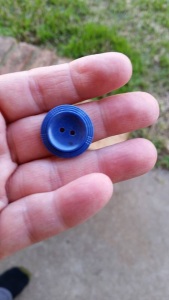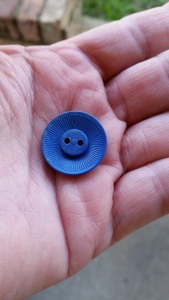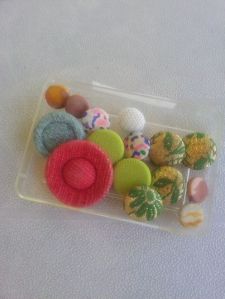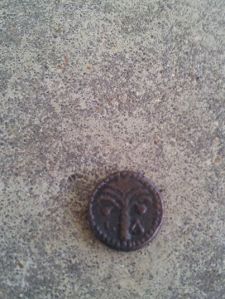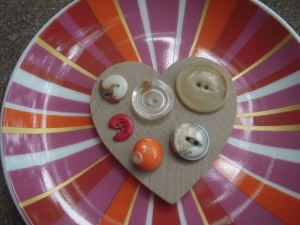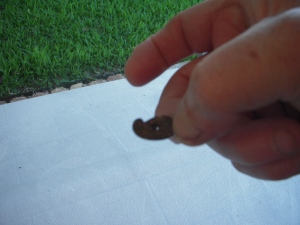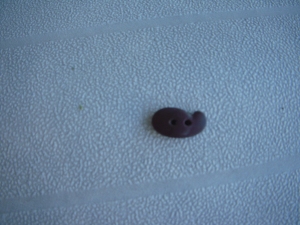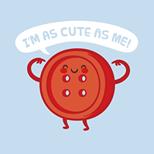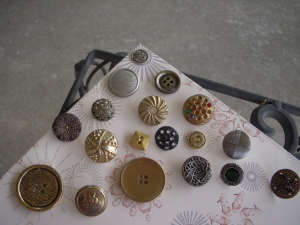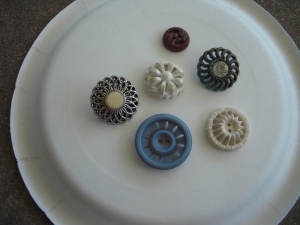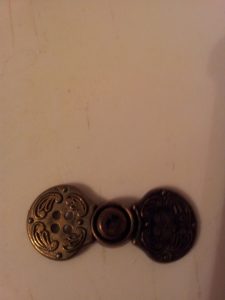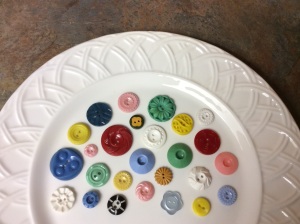
We have always needed buttons to keep our clothes fastened, haven’t we? And, did you know that buttons can be made out of just about anything – from bone, glass, metal, stone, ceramics, and even antlers. There are “Diminutive” buttons (less than 3/8″ across) and “Large” buttons (greater than 1 1/4″ wide), “Old” buttons (pre-1918), and “Modern/Vintage” ones (post-1918).
Military buttons are kind of in a class by themselves, and made of pewter, lead, or two-part buttons that are curved outward, and specific buttons produced for officers. Buttons seem to fascinate so many of us, because of all the materials, age or size.
Buttons don’t have very many parts. There is: the face of the button; the back of the button, and some have shanks. The shank is a loop that helps you attach the button to clothing, etc. It can be built into the button, or made out of metal. Brass picture buttons from the Victorian era are very collectible. A lot of these had images on them taken from operas, children’s books, etc. One reason that people would wear these buttons on their shirts or coats, is that you were telling everyone that you loved literature. Some buttons came from nature, astrology, or even mythology (fairies, etc.)
Some glass buttons were detailed to look like animals or plants. Some were created to appear like fabrics. Some were given an iridescent luster or silver to imitate crochet or needlework.
Another collectible type of glass button comes from what is now the Czech Republic. Many artisans from this area made buttons to resemble Art Deco. After World War II, Bohemian glassblowers produced “moonglow” buttons, which looked opaque and clear.
I will come back at a later time and discuss more types of buttons and their particular era. I think there is enough interesting information this time! ha!
One thing is for sure, we all use them…and even appreciate them, for many different reasons!
God is like buttons…long lasting; give security; join and bring together. –anonymous

